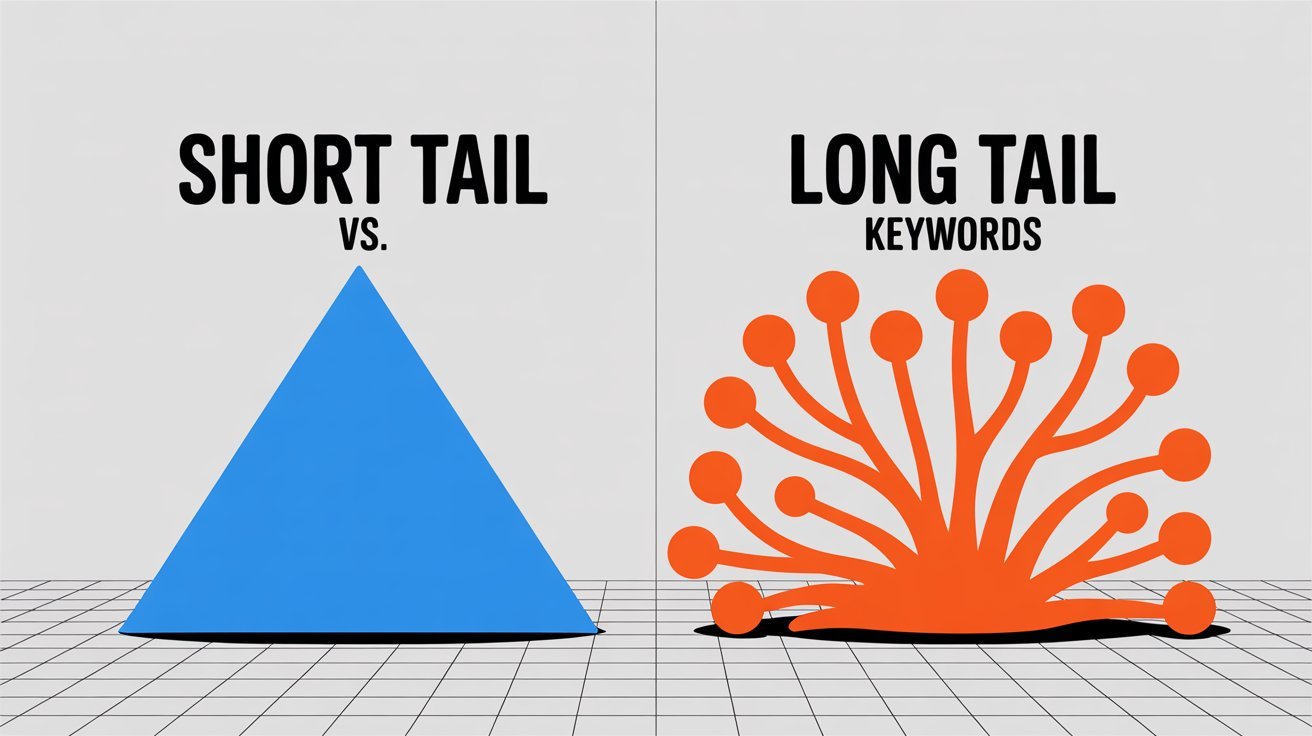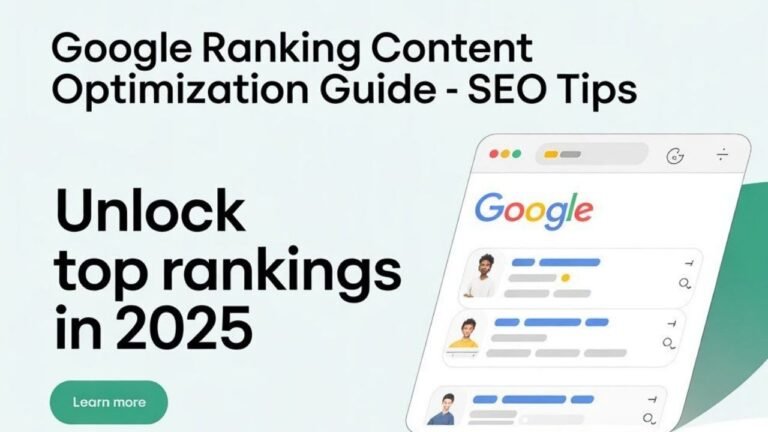If you want your website to show up on Google, you need to use the right keywords. But not all keywords are the same. In this guide, we’ll help you understand the difference between short tail and long tail keywords. We’ll use simple words so even a 4th grader can understand.
This article is SEO-optimized using AEO (Answer Engine Optimization), EEAT, and user intent, so it’s helpful for both readers and search engines.
🗝️ What Are Keywords?
Keywords are the words people type into Google when they’re looking for something.
- Example: If someone types “shoes”, that’s a keyword.
- If someone types “best running shoes for women”, that’s also a keyword — just longer.
❌ Myth: Short Tail = Short Word Count
Many people think:
“If a keyword has less than 3 words, it’s short tail. If it has more, it’s long tail.”
That is wrong ❗
The number of words does not decide if a keyword is short tail or long tail.
What matters is how specific the search is.
✅ Real Difference: Search Intent
🔍 Short Tail Keywords (General)
These are broad or general. We don’t know exactly what the user wants.
- Example:
shoes - The person could be looking for:
- Men’s shoes
- Women’s shoes
- Kids’ shoes
- Brands like Nike or Adidas
📉 Short Tail Keywords Have:
| Factor | Value |
|---|---|
| Search Volume | High |
| Competition | Very High |
| User Intent | Not Clear |
| SEO Rank | Harder to Rank |
🎯 Long Tail Keywords (Specific)
These are niche or targeted. We know exactly what the user wants.
- Example:
best running shoes for women - This person wants:
- The best
- For running
- For women
📈 Long Tail Keywords Have:
| Factor | Value |
|---|---|
| Search Volume | Lower |
| Competition | Lower |
| User Intent | Very Clear |
| SEO Rank | Easier to Rank |
| Conversions | Higher (leads or sales) |
🧠 Why Intent Matters More Than Word Count
Google doesn’t just look at how many words are in your keyword. Google wants to know:
- What is the searcher really looking for?
- Is your content the best answer?
That’s why long tail keywords are powerful. They help you match the user’s real needs.
⚖️ How to Choose: Short Tail vs Long Tail?
Here’s how to decide which to use in your SEO:
| Choose This | When You Want… |
|---|---|
| Short Tail | To target big topics or build brand awareness |
| Long Tail | To get more specific visitors and better conversions |
✨ Smart Strategy:
Use both, but focus more on long tail if:
- You’re a small business
- You want to rank faster
- You want to attract the right people
🔧 Tips for Using Keywords in SEO
- ✅ Match content with the keyword’s intent
- ✅ Use keywords in your:
- Title
- Headings (H1, H2, H3)
- URL
- Meta description
- First 100 words
- Image ALT text
- ✅ Create helpful content that answers questions
- ✅ Use LSI keywords (related words like “sneakers,” “jogging shoes”)
- ✅ Focus on user experience and trust-building
📚 Example Table: Comparing Short vs Long Tail
| Feature | Short Tail | Long Tail |
|---|---|---|
| Example | shoes | best running shoes for women |
| Length | Short | Long |
| Intent | General | Specific |
| Search Volume | High | Medium/Low |
| Competition | High | Low |
| Conversion Chances | Low | High |
| Ranking Difficulty | High | Low |
❓ FAQs
Q1. Are short tail keywords bad for SEO?
Not bad, but harder to rank. Use them to build brand reach, but combine with long tail for better results.
Q2. Can long tail keywords bring traffic?
Yes! Even if fewer people search for them, they are more likely to click, buy, or sign up because their intent is clear.
Q3. How many keywords should I use?
Use one main keyword and a few related (LSI) keywords per page. Don’t overuse — it should feel natural.
Q4. Do I need tools to find long tail keywords?
Tools help! Try:
Google’s autocomplete
“People also ask” section
Free tools like Ubersuggest or AnswerThePublic
🏁 Final Thoughts
Don’t think of short or long tail by word count. Think by user intent.
- Use short tail to cover big topics.
- Use long tail to answer real user questions and get better SEO results.
Want to grow your traffic? Focus on what your audience really wants — and give them the best content for it.





